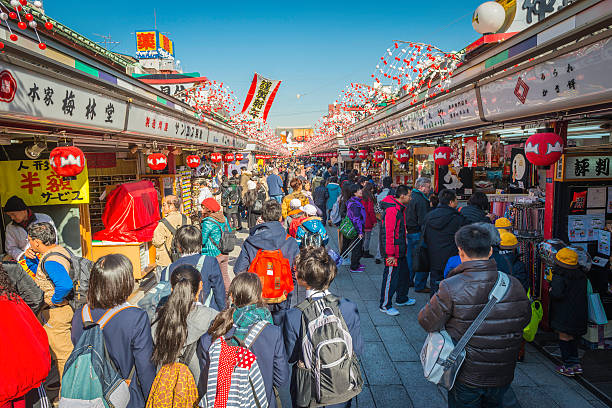The Unique Lifestyle of Japan
Introduction
The Unique lifestyle of Japan, often referred to as the “Land of the Rising Sun,” is a country where ancient traditions and cutting-edge technology blend seamlessly. Its lifestyle is unlike any other, shaped by centuries of history, geographic isolation, and a deep respect for nature and community. From the intricate tea ceremonies to the hyper-modern city life of Tokyo, Japan offers a rich tapestry of culture and daily living that continues to captivate the world.
“Japan’s unique lifestyle is shaped by a rich blend of ancient traditions and modern innovation. For instance, respect and etiquette are prioritized in everyday interactions, while additionally, seasonal festivals are celebrated with great enthusiasm. Moreover, traditional arts such as tea ceremonies and calligraphy are practiced, and minimalist aesthetics are embraced in design and architecture. In fact, both old and new are harmoniously combined in the urban landscape, and group harmony is valued over individualism. Finally, the cuisine is celebrated for its freshness and seasonal variety, providing a distinctive culinary experience.”
The added transitions help guide the reader through the points more naturally. Would you like more
Traditional and Modern Harmony
One of the most remarkable aspects
“Japan’s unique lifestyle is shaped by a rich blend of ancient traditions and modern innovation. For instance, respect and etiquette are prioritized in everyday interactions, while additionally, seasonal festivals are celebrated with great enthusiasm. Moreover, traditional arts such as tea ceremonies and calligraphy are practiced, and minimalist aesthetics are embraced in design and architecture. In fact, both old and new are harmoniously combined in the urban landscape, and group harmony is valued over individualism. Finally, the cuisine is celebrated for its freshness and seasonal variety, providing a distinctive culinary experience.”
The added transitions help guide the reader through the points more naturally. Would you like more
of Japanese life is the balance between tradition and modernity. While the country is home to some of the world’s most advanced technologies, it also holds onto ancient customs with pride. In cities like Kyoto, it’s common to see geisha walking alongside businessmen in sharp suits. Festivals (matsuri) celebrating Shinto or Buddhist traditions are widely attended, even by the younger generations.
The concept of “wabi-sabi,” appreciating beauty in imperfection and impermanence, is central to Japanese aesthetics and influences everything from architecture to interior design. On the other hand, Japan’s cities boast some of the most futuristic landscapes, with neon lights, bullet trains (shinkansen), and smart technology integrated into daily life.
Deep Respect for Nature
Nature plays a vital role in the Japanese lifestyle. The practice of “forest bathing” (shinrin-yoku) encourages people to spend mindful time in forests, which is believed to reduce stress and enhance well-being. Gardens are meticulously maintained to reflect the seasons, and cherry blossom (sakura) viewing in spring is almost a national pastime.
Seasonal awareness deeply influences daily life, cuisine, fashion, and festivals. Whether it’s enjoying seasonal foods like matsutake mushrooms in autumn or wearing lighter fabrics during the humid summers, the changing seasons are always respected and celebrated.
Work Culture and Ethics
Japanese work culture is famously intense. Concepts like “karōshi” (death from overwork) highlight the darker side of this dedication. However, there is also a strong emphasis on loyalty, precision, and teamwork. Many companies value long-term employment relationships, and employees often exhibit an unparalleled commitment to their employers.
The idea of “kaizen” (continuous improvement) is also deeply embedded in the workplace. Workers are encouraged to find small, incremental improvements to efficiency and quality every day, leading to Japan’s reputation for excellence in manufacturing and services.
However, in recent years, there has been a growing shift. Many younger workers are seeking a better work-life balance, and some companies are introducing more flexible working hours, remote work options, and mental health support initiatives.
Minimalism and Efficiency
Space is at a premium in Japanese cities, so the lifestyle tends toward minimalism and efficiency. Japanese homes are often compact but incredibly functional. Furniture is multipurpose, and storage solutions are innovative. The traditional Japanese aesthetic of minimalism is seen not only in homes but also in fashion and product design.
This minimalism extends to public behavior as well. Trains are typically silent; people avoid speaking on the phone in public transport out of respect for others. Cleanliness is another hallmark — it’s common to see people cleaning not just their own spaces but public areas as well.
Unique Food Culture
The Unique lifestyle of Japanese cuisine is another key part of the country’s lifestyle. Meals are not just about eating but are considered an art form and a form of connection with nature and community. Dishes emphasize seasonal ingredients and presentation. Staples like sushi, ramen, tempura, and wagashi (traditional sweets) have deep cultural significance.
Eating habits also emphasize mindfulness.https://www.bokksu.com/blogs/news/lifestyle-in-japan?srsltid=AfmBOorkLRlzIbAYvr6AMqe3jzp6uAl47wYiYeJQuj2zx4MuEvElPb6D It’s customary to say “itadakimasu” (I humbly receive) before eating and “gochisōsama” (thank you for the meal) afterward, expressing gratitude for the food and those who prepared it.
Convenience stores (konbini) offer high-quality, affordable meals, reflecting the busy yet quality-conscious lifestyle of modern Japanese society. Street food festivals, traditional ryōtei (high-end Japanese restaurants), and casual izakaya (pubs) all coexist vibrantly.
Social Etiquette and Community Life
Politeness and respect are pillars of Japanese society. Bowing is a key form of greeting, and there are intricate rules governing social interactions. Hierarchical relationships (senpai-kōhai) are respected, particularly in schools and workplaces.
Communal living and cooperation are deeply valued. This is evident in daily acts of kindness, from the way people queue up neatly to the tradition of exchanging small gifts (“omiyage”) after traveling.
Conclusion
The lifestyle of Japan is a mesmerizing blend of old-world charm and futuristic innovation. It’s a society where rituals, community values, and a deep respect for nature and order meet relentless advancement and efficiency. Living in Japan means participating in an ongoing dialogue between the past and the future, where every detail — from a beautifully arranged bento box to a high-speed train ride — tells a story of balance, respect, and quiet pride.
Visitors and residents alike find themselves enchanted by the country’s unique way of life. Whether it’s the discipline, the art, the food, or the collective spirit, Japan offers a lifestyle experience that is not only distinct but also profoundly inspiring.
FAQs
Q1: Is it difficult for foreigners to adapt to Japanese lifestyle?
Adapting can be challenging due to language barriers and social etiquette differences, but many foreigners find the experience enriching and welcoming once they understand cultural norms.
Q2: Why is cleanliness so important in Japan?
Cleanliness stems from Shinto beliefs about purity and respect for others. It is deeply ingrained in daily habits and public behavior.
Q3: How does Japanese work-life balance compare to other countries?
Traditionally, work-life balance has been skewed towards work, but this is slowly changing, with younger generations demanding more flexibility.
Q4: What is the role of nature in Japanese daily life?
Nature is revered and celebrated through festivals, seasonal foods, and daily practices like forest bathing and gardening.
Q5: What are some unique features of Japanese homes?
Japanese homes prioritize minimalism, multifunctionality, and a close relationship with nature, often including features like tatami rooms, sliding doors (fusuma), and small gardens.
6.What are some unique features of Japanese culture?
-
Respect and etiquette are deeply ingrained in daily life.
-
Traditional arts like tea ceremony, ikebana (flower arranging), and calligraphy.
-
Seasonal appreciation shown through festivals and traditions (like cherry blossom viewing).
-
Minimalist aesthetics seen in architecture, fashion, and design.
-
Blending of old and new — ancient shrines stand next to modern skyscrapers.
-
Strong group harmony (called wa) valued over individualism.
-
Unique cuisine emphasizing freshness, presentation, and seasonality.











